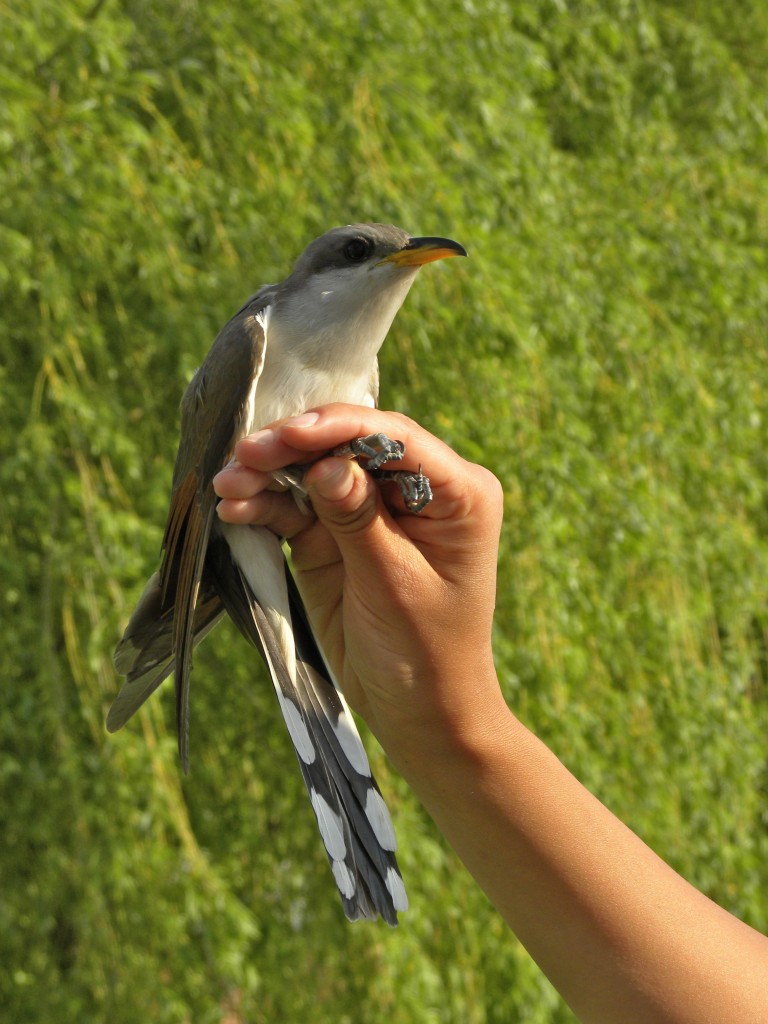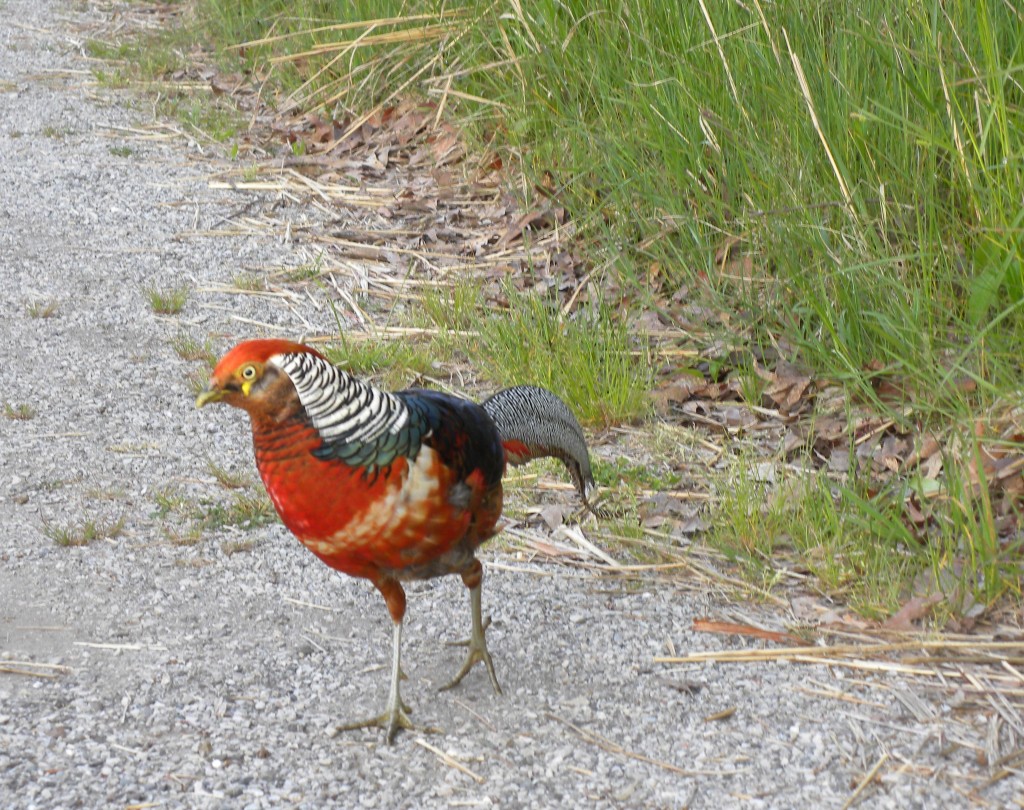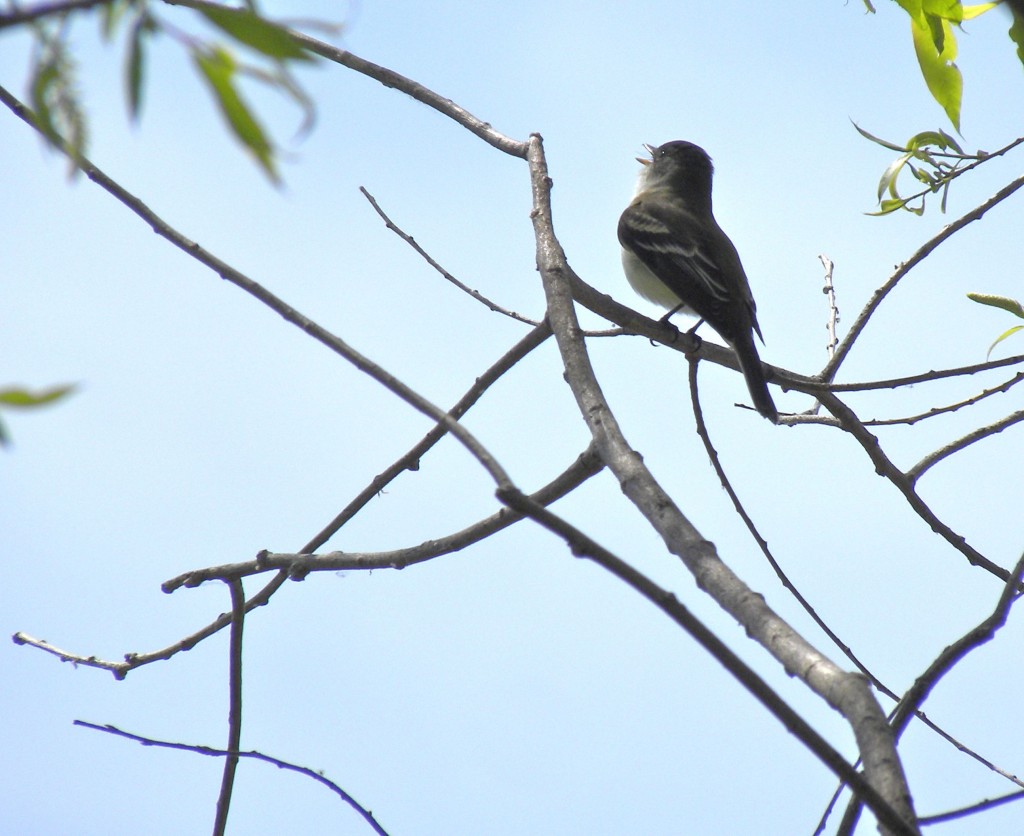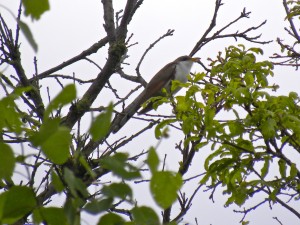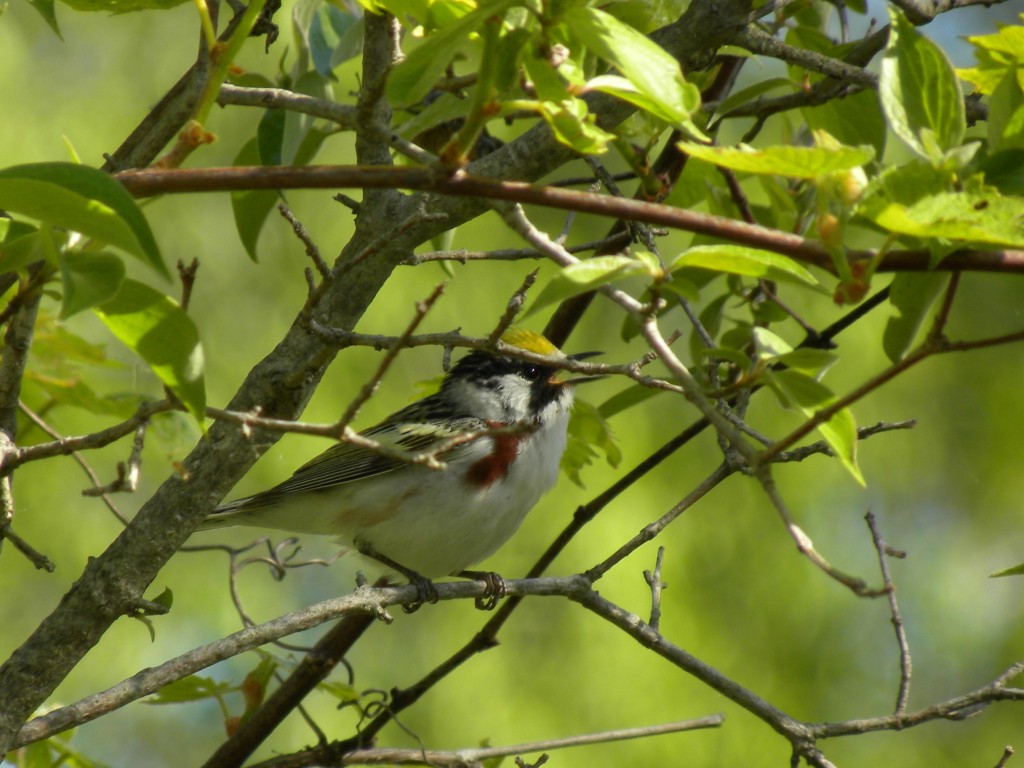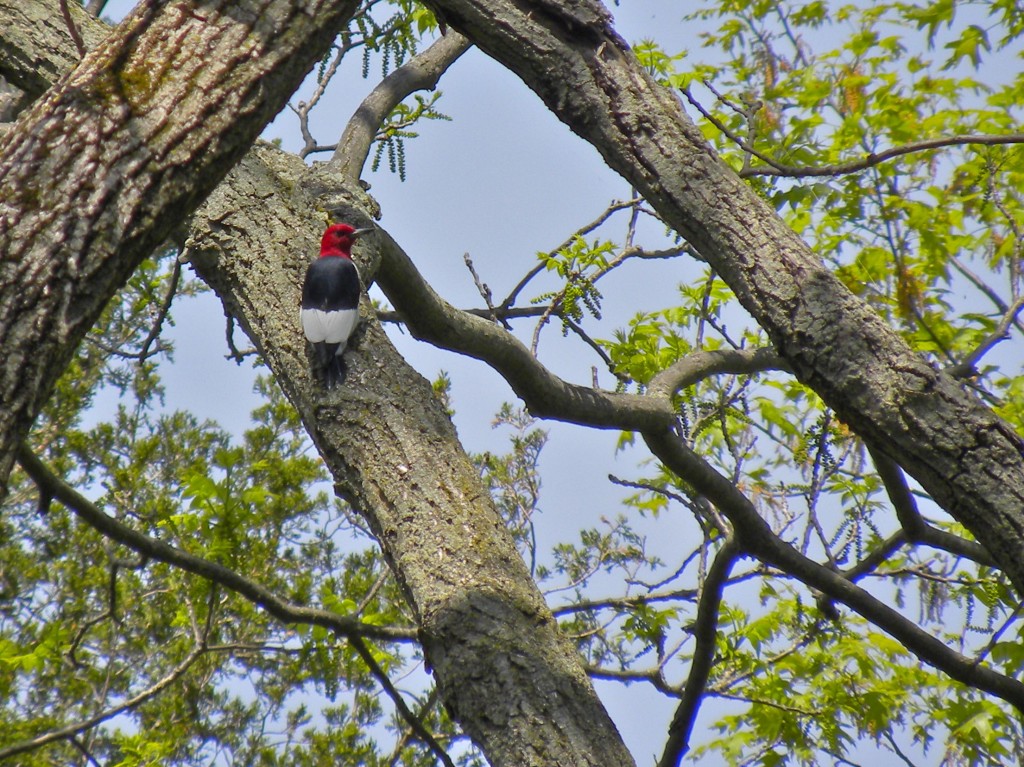May 27th 2012. I have a goal to explore more of a rural municipality nearby, one rich in swampy forests, marshes and upland fields. The landscape owes much of its natural and scenic interest to post-glacial land forms, features such as drumlins, eskers and other ice-sheet leftovers that have trapped water between abrupt hills and ensure meandering courses for the many rivers and creeks.
This morning, long before most people were up and about, I decided to walk a long but straight path that started at the top of a hill and then plunged into a low flat and wet valley. The view at the top was wonderful and almost endless, a convenient bench is there for a very good reason. Wide fields of grass, still uncut (& I hope they stay that way for a while yet) support Bobolinks, Savannah Sparrows and Eastern Meadowlarks; all were singing. It was a morning of bird song because the hedgerow was home to singing Yellow Warblers, a House Wren and a pair of Eastern Kingbirds that flew from treetop to treetop making their distinctive clinking tin can sound.
At the bottom of the hill the wide, dry path continued straight through dense wet woodland that was lively with the songs of Gray Catbirds, Eastern Wood Peewees and several Northern Waterthrushes. I couldn’t really see any of them, the woods are so dense that anything beyond 6 feet away is pretty much out of sight. The Northern Waterthrush has a sharp, loud, assertive song; sometimes described as “Three-three-three twotwotwo oneone”. Or “Twit twit twit-sweet sweet sweet-tew tew tew.” I tried to draw one closer to me with some sharp chip sounds, but without luck. I have sometimes found Northern Waterthrushes to be quick to investigate intruders (like this rather blurry one in my only photograph of a waterthrush ), but not today; at least not that I could see. I contented myself with knowing they were there, just like a Canada Warbler and a Veery, both heard singing but not seen.
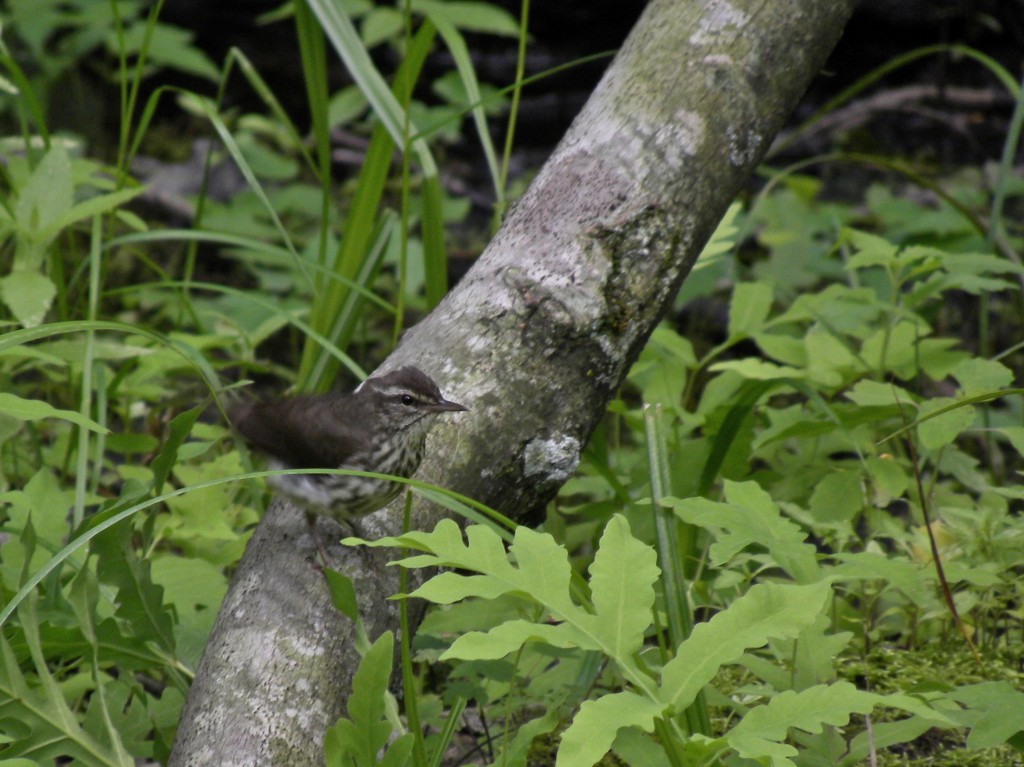
The Veery was Bird of the Day despite staying out of sight, which was a bit of a shame because it is a subtle and graceful thrush, shy and quick to move away. It has a warm rufous-chestnut back and head and an almost clear cream breast marked only by a hint of spots. A Veery’s song can stop you in your tracks; you just have to listen; it attracts descriptions like ethereal, flute-like, somewhat mournful, and downward spiraling. It’s a breathy exhaled “Viuw, Veeer vir v’r v’r vr r” fading away into the forest.
